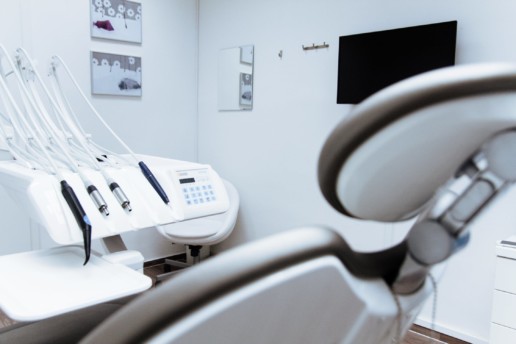What will Workplace Wellness Look Like in 2020?
What will 2020 have in store of workplace wellness? Currently, all indicators are pointing toward a rapid evolution of the workplace wellness industry. Read this blog post to learn more about what wellness will look like in 2020.
As we look toward 2020, all indicators point towards a rapid evolution of the U.S. workplace wellness industry characterized by innovative solutions for managing health care costs that serve the increasing need for proactive ownership of well-being. However, are advances in related disciplines being leveraged optimally, cohesively and creatively to provide for maximum benefit to both the employee and employer?
The corporate model of wellness programs ranges from education programs, to a more evolved model of on-site fitness facilities, incentive programs and HR driven wellness initiatives as part of an overall health and benefits offering. The 2014 SHRM Survey of Strategic Benefits - Wellness Initiatives shows that 76 percent of all surveyed companies had some form of wellness programs/resources. Among those companies two-thirds offered some form of incentive or reward program.
The results of these types of programs have already demonstrated the positive impact of a collaborative responsibility partnership between employer and employee in implementing a wellness approach and the reduction of medical costs.
Several key performance indicators have been used for evaluation, including reductions in monthly medical cost spend, hospital admissions and employee absenteeism. According to SHRM, of the 30 percent who conducted a cost analysis of their wellness programs, 93 percent noted their programs were somewhat or very effective in cutting costs.
This certainly demonstrates a return on investment (ROI) to the employer. In addition, the positive qualitative effect on the organizational culture cannot be understated, with direct impact on talent and team spirit as well as other variables that are incremental to the quantitative benefits measured.
This is particularly important given that variables such as an increasingly aging workforce (by 2020, the number of Americans in the 55 to 64 age group will have grown by 73 percent since 2000), an increase in predominant disease states (by 2030, 40.5 percent of the US population is expected to have some form of cardiovascular disease) and rapidly changing regulations added to the equation, employers are evaluating best and "next" practices to determine if these programs are truly optimized to realize their full potential of impact.
For the next iteration of workplace wellness, the lessons learned can be leveraged from the evolution of the traditional health benefit offering to a health exchange model or to the advances and learnings in personalized therapeutic medicine. The current opportunity requires a creative and innovative approach to health and wellness ownership. Coupling a predictive, proactive and fact-based wellness management approach with employee-owned and led wellness decisions can provide a powerful and personalized platform.
By maintaining this initiative in a structured and sustainable manner, employers are able to provide a more targeted approach of spending proactive wellness dollars for maximum ROI and decreasing the reactive spend on medical costs.
These personalized programs will enable companies to better track and monitor costs and ROI with the goal to have more than 30 percent of the companies properly monitoring cost efficiencies. This is further supported by the fact that 90 percent said they would increase their investment in wellness programs if they could quantify the ROI.
Targeted Wellness
Traditional medical treatment has evolved significantly from standard diagnostic evaluations to increased utilization of scientific advances, specifically in terms of personalized medicine. Medical decisions and treatments are tailored to an individual patient through a data-based approach to drive the efficiency and effectiveness of patient treatment.
Similarly, there is an opportunity for the employee - within the framework of privacy regulations - to leverage this fact-based approach to optimize the value derived from a wellness offering. Two-thirds of employers involved in wellness initiatives typically provide some type of defined contribution or incentive towards wellness (e.g., fitness rebate); however, an opportunity exists to focus this spend on the desired health outcomes. This would provide the maximum benefit to the employee from a well-being standpoint, as well as to the employer for its investment.
While the powerful combination of data analytics and segmentation analysis allows a human resources team to facilitate a fact-based decision-making approach to right-fit an organization with the right individual in the right role at the right time, an organization can effectively manage the time and money dedicated to workplace wellness by creating a tailored program based on the individual employee's current needs and critical influencing factors.
Wellness Exchanges
Employers have made the journey from self-funded managed health care to the growing trend of providing employees with a "shopping mall" of health insurance options, and on to formal health exchanges - gradually increasing the patient-centric involvement of employees in managing their own health care choices.
The value drivers for this organizational transition include increased price competition based on the marketplace model as well as cost savings influenced by employers not overbuying health care coverage for their employees. This is exemplified by the vast majority of participants switching to cheaper plans in their first year of choice coverage.
This undertaking by an organization is by no means a small effort, and it requires a good amount of diligence and change management - not only in creating the road map for the transformation journey, but also in properly structuring, executing and sustaining this approach. In a well-planned and structured implementation journey, the return on investment can be well recognized.
Similarly, a workplace wellness exchange can offer a suite of proactive health program choices designed to give the employee the responsibility to make an informed and impactful decision that is tailored to drive specific health outcomes.
A marketplace approach can also drive competitive offerings from wellness solution providers and encourage a spirit of innovative and cost-conscious platform options - further maximizing use of wellness dollars. This model will encourage individuals to leverage their own personal health ecosystem information (e.g., current state baseline, lifestyle, environmental factors and disease state predisposition) to choose a solution that may help reduce reactive health care dollars spent based on disease state prevention and risk factor reduction.
According to SHRM, year-over-year employee participation has remained flat. An innovative and personalized approach could help motivate and boost participation and would also continue to ensure that the individual employee's wellness responsibility is shared in partnership with the employer. This would require an independent review of the process, structure and plan design, specifically as it relates to patient privacy and the impact to the holistic benefits offering.
Regardless of a company's ability to track ROI, an overwhelming majority (72 percent) think their wellness initiatives are very or somewhat effective in reducing health care costs and 78 percent thought they improved the overall physical health of their employees.
As the impact of reactive medical claim costs on employers continues to increase due to a variety of influencers, proactive workplace wellness will likely evolve and become an inherent component of an organization's benefits offering.
This presents an opportunity to leverage recent learnings from other initiatives in the life sciences vertical to create an effective and efficient workplace wellness platform that is data-driven and tailored to the needs of the employee - providing a marketplace for choice and competition, and reinforcing the shared partnership responsibility between the employer and employee.
SOURCE: Pervaaz, V. (Accessed 01 November 2019) "What will Workplace Wellness Look Like in 2020?" (Web Blog Post). Retrieved from https://www.corporatewellnessmagazine.com/article/workplace-wellness-in-2020
Strategies to promote emotional well-being in the workplace
According to the National Alliance on Mental Health, one in five adults experiences some form of mental illness during the year. Research has shown that 90 percent of employees perform better when they address mental health. Read the following article to learn more about how to promote emotional well-being at work.
Employers are taking a greater interest in their employees’ well-being by promoting emotional wellness at work.
Wellness programs are offered by 58% of employers, according to data from the Society for Human Resource Management. There are mutual benefits to be reaped by the employer and employees when an organization looks to support its workers’ emotional wellness.
About 90% of employees perform better when they address mental health, but only 41% feel comfortable bringing it up during a check-in, according to data from 15Five, a software company that specializes in gathering employee feedback.
One in five American adults experiences some form of mental illness in any given year, according to the National Alliance on Mental Health. Additionally, one in every 25 adults is living with a serious mental health condition such as schizophrenia, bipolar disorder or long-term recurrent major depression.
Employees are demanding better mental health benefits from their employers and some of them are listening. In September, coffee giant Starbucks announced that it is taking steps to improve its employees’ mental health with a new long-term initiative that includes an enhanced employee assistance program and mental health training for store managers.
Only 25% of U.S.-based managers, across a variety of industries, have been trained to refer employees to mental health resources, according to SHRM. Employers including PNC and Ocean Spray are also investing in benefits to address mental health.
See Also: 5 reasons employers should offer student loan repayment benefits
By investing in emotional and mental wellness benefits, employers are creating a human-centric workforce that drives retention, productivity and engagement, says Heidi Collins, vice president of people operations at 15Five. A key part in achieving this to create a culture that normalizes conversations about mental health.
Collins spoke with Employee Benefit News about how organizations can provide management with stronger training and more open check-ins that enable them to build trusting relationships with their employees to promote productivity.
How is 15Five creating a culture that is more understanding of employees’ mental health needs?
In so many different practices with our employees, both in our manager and direct report programs, but also as a company as a whole. We are normalizing emotions and emotional wellness in the workplace. What it all has, to begin with, is the strategy behind it and your company’s values. It can’t just be a program that HR is sponsoring and promoting but that’s not really attached to the overall company values.
How can an employer create a more mental-health and wellness-focused workplace?
We do automated weekly check-ins between managers and their direct reports. We have a recognition feature called High5, so that people throughout the organization can highlight their peers, express gratitude and also highlight someone for how they may have impacted their day or a project that went really well. There’s a recognition feature, there’s a review feature, there’s a weekly check-in feature. In the weekly check in we have a poll rating and every week we ask our employees: on a scale of one to five, how did you feel at work this week? So we build into our product the practice of managers checking in with their employees about their feelings and about their emotional and mental well-being. We attempt to create enough psychological safety, trust and openness to vulnerability that employees feel comfortable that if they are having a two out of five weeks, it can be okay to share that with a manager and be able to back it up with the reason why. So for example, an employee might say: This week was a two out of five for me because three projects blew up in our faces and at home my kid is sick and I didn’t get any sleep. The employee can just lay it all out there.
How can employers and employees become more comfortable normalizing the conversation around mental health?
It has to be very intentional, deliberate and explicit. It’s the kind of stuff employers may talk about or advertise or promote on their employer branding website...it should be very clear that promoting emotional well-being and mental wellness is part of the employer’s culture and something they value. The executive team and all of the leadership needs to be totally brought into that and that’s challenging because there are many people out there in the world who aren’t comfortable yet with talking about or bringing up those kinds of things at work. That’s the big challenge we’re facing right now, yet so many employees are coming to expect [support for mental health issues].
See Also: Employers can help employees catch some Z's with new wellness benefit
Is there a generational disconnect when it comes to promoting emotional wellness in the workplace?
I would say that those of us who don’t have our heads stuck in the sand, we get it. We realize that there’s a reason this mindset of addressing employees’ mental health is so popular. It’s because it’s way more effective. This is how we want to work. I’m generation X and I have a lot of friends who work in big corporate environments who still think you leave your emotions at the door. But I would say those of us who want to have a more progressive approach are so on board with it. HR professionals and potential employees who follow those old school ways, they won’t even get hired at a company like ours and I bet a lot of our customer’s companies. That’s because we know that doesn’t work anymore.
What specifically has 15Five done to promote this initiative among its employees?
It all starts from our hiring process and what we communicate about our values and what it’s like to work at 15Five. Not only are we assessing candidates on their skills, but we’re also assessing them on their willingness to go to that very vulnerable place in their day to day with their manager or direct report. We have question in our interviews that ask “would you be comfortable talking about emotions at work?” and “if you were a two out of five on the emotion poll for the week, would you be able to share that with your manager and how would you go about doing that?” We will ask questions to make sure candidates we are bringing in are okay with this way of doing things. If somebody is going into a manager position internally, we have just implemented a manager assessment interview to make sure this person really has the skills to be a 15Five manager. A manager in our eyes is not just a taskmaster or somebody who approves your time off. They need to be employees’ coach, cheerleader and champion and they need to be comfortable supporting employees when things aren’t going well. It’s almost like having the skill set of a therapist.
SOURCE: Shiavo, A. (23 October 2019) "Strategies to promote emotional well-being in the workplace" (Web Blog Post). Retrieved from https://www.benefitnews.com/news/strategies-to-promote-emotional-well-being-in-the-workplace
Employers can help employees catch some Z's with new wellness benefit
Employers are starting to offer employee benefits that are focused on a long-ignored but crucial aspect of employee health - sleep. Read this blog post to learn more about this new wellness benefit.
Employers are taking a greater interest in employees’ emotional and physical well-being by offering specialized programs focused on mental health, weight loss, financial health, and now one long-ignored yet crucial aspect of health — sleep.
Beddr, a sleep health technology company, has launched a comprehensive, personalized solution to identify and treat the root causes of chronic sleep issues, though a voluntary benefits platform. The program leverages clinical data captured from Beddr’s app that uses an optical sensor and accelerometer to measure blood oxygen levels, stopped breathing events, heart rate, sleep position and time in bed.
About 45% of the world’s population has chronic sleep issues, according to a study in the Journal of Sleep Research. Poor sleep costs U.S. employers an estimated $411 billion each year, according to a report from Rand.
Employees using the Beddr benefit will have access to an expert-led sleep coaching program and a nationwide network of sleep physicians to provide targeted treatment options to help employees improve their sleep health. The program has the potential to save an employer up to $5,700 per employee, per year in productivity improvements, lower healthcare costs and decrease accident rates, Beddr says.
“Sleep is the foundation to every employee’s mental and physical health. High quality sleep has been shown to both reduce healthcare costs as well as improve productivity, but most employers haven’t found a comprehensive program that addresses the primary root causes of sleep issues and that benefits their entire workforce,” says Michael Kisch, CEO of Beddr. “We have seen a dramatic increase among our users relative to the overall population in their understanding of their sleep health and how their choices impact their overall sleep quality.”
Beddr partners with benefits teams to design a customized program specific to each employer and their employees. The company developed a screening process that makes it easy for an employer to engage their employee base, while providing Beddr the ability to identify employees who are a good match for the program.
In some cases, the company heavily subsidizes the cost of the benefit to employees, while in others it is the full responsibility of the employee. In the latter instance, the company negotiates a discount that is passed on to all participating employees. That discounted price is less than what an employee would pay to purchase the program directly from Beddr.
“Beddr was founded on the belief that the most important thing a person can do to improve their physical and mental health is to get consistent, high-quality sleep,” Kisch says. “We see employers as natural partners in fulfilling this mission because the goals of a company and its management are highly aligned with the goals of our program — to improve the health and productivity of employees. ”
SOURCE: Shiavo, A. (23 October 2019) "Employers can help employees catch some Z's with new wellness benefit" (Web Blog Post). Retrieved from https://www.benefitnews.com/news/beddr-app-helps-employees-get-more-sleep
Why 24/7 Work Culture is Causing Workers to Burn Out
According to Dr. Michael Klein, workplace cultures that encourage employees to be available 24/7 may be causing burnout and other mental health issues like anxiety and depression. Read this blog post from Employee Benefit Advisor to learn more.
Workplace culture that encourages employees to be available 24/7 may be causing burnout and other mental health issues like anxiety and depression.
That’s according to business psychologist and workplace adviser Dr. Michael Klein, who says companies that encourage employees to work anytime and anywhere is making it more likely that burnout will occur.
“The problem now is when you have the ability to work from wherever you want,” he says. “It’s so important for general wellness to make time to exercise, time for family and to not check work email.”
In May, the World Health Organization classified burnout as an “occupational phenomenon” that is characterized by chronic work stress that is not successfully managed. Research shows that continued stress at work can lead to more serious mental health conditions like depression and anxiety.
As a result, Klein predicts the next few years will see an increased need for on-site mental healthcare which could be offered through employee assistance programs. Offering EAPs, flexible work options and family-friendly benefits like onsite childcare are just some of the ways employers can reduce stress for workers.
And HR may need to take the lead. Misty Guinn, director of benefits and wellness at Benefitfocus, says finding HR professionals that can handle difficult conversations around mental health may be key to addressing the problem. But many are not comfortable enough to have those kinds of conversations.
“Most have yet to achieve that level of comfort with conversations around mental health,” she says, noting that younger generations are often more comfortable talking about mental health issues. “We’ve got to enable people, especially within HR, benefits, and management to have those conversations and be comfortable with them.”
Guinn also says that EAPs alone may not be enough to address mental health issues for workers because these programs are often scarcely utilized. Subsidizing mental health co-pays, work-life balance and PTO policies are benefit options for employers to create a meaningful difference for worker's mental health, she adds.
“Too often employers make the mistake of believing that offering an employee assistance program sufficiently checks off the mental health box in a complete benefits package,” she says. “In reality, these programs generally have low utilization because employees don’t have confidence in how confidential they are.”
Klein and Guinn agree that employers should consider more ways to support the total well-being of employees. Companies who prioritize their people will do better in the long term, Guinn adds.
“Employers need to take purposeful actions within their policies and programs to reinforce their support of total well-being for employees and their families,” she says.
SOURCE: Hroncich, Caroline. (10 June 2019) "Why 24/7 Work Culture is Causing Workers to Burn Out" (Web Blog Post) https://www.employeebenefitadviser.com/news/24-7-work-culture-is-causing-workers-to-burn-out
Employer-sponsored savings programs could be the future of financial wellness
An estimated 43 percent of hourly workers have less than $400 set aside in their savings for emergencies. For those workers, an accident or unexpected expense can be financially devastating. Read this blog post from Employee Benefits Advisor to learn more about employer-sponsored savings programs.
For 43% of hourly workers who report having less than $400 in savings set aside for emergencies, an accident or unexpected expense can be financially devastating.
But employer-sponsored savings programs could be a viable solution. Low- and middle-income employees who are more financially secure have been shown to be less stressed and more productive when they have an employer-sponsored savings program, which may lead to lower healthcare costs, better customer service and stronger attendance, a new survey from nonprofit organization Commonwealth finds.
The national survey of 1,309 employees earning less than $60,000 a year found that employers offering workers savings interventions at the time of raise, can positively impact their employees’ personal finances. Three-quarters of hourly employees surveyed believe that if their employer offered savings options at the time of a raise, they would be less stressed and more confident about their finances.
“There's a lot of talk about financial stress, but when you're really living paycheck-to-paycheck, that stress is about being able to pay your bills on time,” says Commonwealth’s executive director Timothy Flacke. “It's about cash flow, and that's a particularly acute form of anxiety.”
The report analyzes the potential effects of savings programs including split direct-deposit paychecks, low-interest loans and savings accounts — and compares how those programs alleviate employees’ financial stress. Workers surveyed believe if their employer-provided savings tools they would be happier and more productive. Moreover, the survey found individuals with more in savings were less likely to have financial worries than those with little savings.
One of the companies partnered with Commonwealth to link raises with savings is Minnesota-based education company New Horizon Academy. In the beginning of the year, the company piloted a new savings program that gives its employees the option to have the raise diverted through the payroll system to a savings account each pay period, instead of having it go into their normal checking account.
“Through this, our employees are beginning to build up some financial reserves in case of an emergency, or life circumstances that requires them to dip into a savings account,” says Chad Dunkley, CEO of New Horizon Academy. Although it’s too early to state results from the pilot program, the company hopes it will have a positive long-term impact on the financial health of its employees, Dunkley says.
“This is just one of those additional ways [to] stabilize our employees, so they can come into the classroom without the financial stress that certain situations cause when you're not prepared for an emergency, whether it's new tires on your car or health issues,” he says.
SOURCE: Nedlund, E. (19 August 2019) "Employer-sponsored savings programs could be the future of financial wellness" (Web Blog Post). Retrieved from https://www.employeebenefitadviser.com/news/reduce-stress-increase-productivity-with-financial-wellness
Engaging employees in healthcare — even while traveling
In 2018, Americans took 463.6 million trips for business, leaving employees unsure of what to do when they get sick or injured while away. Read this blog post for how employers can engage employees who are traveling in healthcare.
Business travel is booming. Americans took 463.6 million trips for business last year. But what happens when a business traveler gets sick or injured while away from home and how can employers help their employees in this situation?
It starts with a simple solution: Make sure you’re providing employees with a health insurance plan that includes coverage outside the state or region where the business is located. While the majority of plans provide coverage for illnesses and injuries that meet the insurer’s definition of an emergency, some plans don’t cover care for common serious, but non-emergency health problems like strep throat, migraine headaches, a sprained ankle or back pain. Employers should ensure they offer at least one plan option that includes either an extended physician and hospital network or coverage for out-of-network care.
If employees need to travel out of the country for business, employers may want to consider offering travel medical insurance, which provides coverage during the period of time while the employee is outside the U.S. and medical evacuation if needed. To ensure employees have all the immunizations they need and are aware of any health risks at their destinations, employers can offer access to or reimbursement for pre-trip visits with a travel medicine specialist.
Even when employees have health insurance that gives them access to care while they’re away from home, connecting with experienced healthcare providers can still be difficult. Some insurers offer phone support for plan members seeking care providers, although often these providers are not heavily vetted for the experience or providing the highest quality care. Health advisory services can also help employees find and connect with healthcare providers in the U.S. and overseas.
When considering health advisory firms, employers should ask how the firm vets the healthcare providers it connects employees with and whether the firm uses a set network of providers or whether it connects employees with the most appropriate providers regardless of their health system affiliation.
Make sure employees know how to find the right type of care
When an employee falls ill or gets injured while traveling for business, her or his first instinct may be to seek care at a local emergency room, but that’s not always the best option. In addition to long wait times, the cost of care delivered in the emergency room is significantly higher than other care settings.
- Employers can help employees make better choices by providing information about the options available and how to choose the right care setting:
- The emergency room for serious, life-threatening illnesses and injuries such as chest pain, symptoms of a stroke, serious burns, head injury or loss of consciousness, eye injuries, severe allergic reactions, broken bones and heavy bleeding
- An urgent care center for conditions you’d usually make a doctor’s appointment for such as vomiting or diarrhea, fever, sprains, moderate flu symptoms, small cuts, wheezing and dehydration
- A walk-in or retail clinic for minor problems such as a rash with no fever, mild flu-like symptoms, sore throat, cough and congestion, ear pain and eye itchiness or redness
- Telemedicine or virtual physician visits for minor illnesses and injuries and advice on whether additional care is needed
The key to helping employees know which care setting is the most appropriate is ongoing communication and education, which can take the form of in-person meetings with the benefits team, newsletter articles and email blasts, and video content shared through the company’s intranet channels.
Employees who are living with chronic health conditions should take special steps when traveling for business, including ensuring they have enough of any prescription medication they take and bringing an extra prescription with them for essential medications in case they’re lost in transit.
Ensure employees can quickly share their medical records with providers
Another important part of the healthcare equation for business travelers is ensuring that when they need care while they’re on the road, the healthcare providers who treat them can get quick, secure access to their medical records. Access to these records is important for several reasons:
- It gives a provider who’s not familiar with the employee’s medical history a comprehensive look at past and current health problems and chronic conditions, medications, allergies or adverse reactions, and treatments and surgeries. Having this information can lower the risk of misdiagnosis, inappropriate care and duplicate care or testing, which not only adds unneeded costs but can also cause harm.
- This information can be especially important when employees are seriously ill or injured and can’t speak for themselves to share medical history and their wishes about issues like the use of a ventilator or feeding tube.
There are several online services and apps that allow users to upload medical records so they can share them with healthcare providers. Another option is to work with a health adviser who can make sure employees’ records are carefully reviewed to ensure accuracy and stored in a secure universal medical record that can be accessed in minutes by treating physicians anywhere in the world.
Giving employees who travel for business the right resources and guidance can not only increase their peace of mind, it can help make sure they have access to the care they need wherever work takes them.
SOURCE: Varn, M. (18 June 2019) "Engaging employees in healthcare — even while traveling" (Web Blog Post). Retrieved from https://www.benefitnews.com/opinion/engage-employees-in-healthcare-when-traveling
One overlooked way to promote well-being: Target oral health
Are you promoting oral health when promoting employee wellness? Research shows an association between gum disease and conditions like diabetes and coronary artery disease. Continue reading to learn more.
With the cost of employer-sponsored healthcare benefits approaching $15,000 a year per employee, according to the National Business Group on Health, innovative companies are looking for new and creative ways to get maximum value from their benefits dollars.
By embracing benefits strategies focused on overall health, companies can help their current employees be healthier and more productive and attract and retain the workers they need to succeed in today’s competitive labor markets.
And although wellness programs or health apps might first spring to mind, there’s an overlooked way to promote employees’ health: oral care.
Guided by research that shows associations between gum disease and conditions like diabetes and coronary artery disease, forward-thinking dental insurers are developing products that emphasize the importance of regular oral care, particularly for workers with those conditions — and smart companies are jumping on board.
Products that emphasize the importance of maintaining oral health are an important step in integrating care. Over the next several years, leading-edge insurers will create new ways to engage patients in conversations about their dental and overall health, as they seek to encourage behavior changes and improve health outcomes. To help improve oral and overall well-being, insurers will need to share oral care information with their members through targeted emails, text messages and phone calls.
Additionally, because individuals dealing with a complex treatment plan may put off receiving oral care while they address their medical issues, they could benefit from plans featuring a case manager, or a “dental champion.” Working in conjunction with medical case managers, a dental champion can help employees understand how receiving regular oral care can influence their overall health. They also can ensure a company’s workforce is getting the oral care they need, helping them find providers and arrange appointments.
Savvy employers recognize that any realistic effort to limit the increase in healthcare costs begins by addressing chronic ailments. According to the Centers for Disease Control and Prevention, six in 10 Americans live with at least one chronic disease, like heart disease, cancer, stroke or diabetes.
By promoting overall health — including regular oral care — employers can encourage positive lifestyle changes that help their employees reduce the likelihood of many chronic problems. Those who brush and floss their teeth regularly, receive frequent cleanings and checkups and deal with oral issues at early stages are taking steps to improve their overall health.
Because everyone’s individual situation is different, insurers and employers will need to include a more personalized approach, engaging members in conversations about their dental health and how it contributes to attaining their overall health goals.
SOURCE: Palmer, T. (13 June 2019) "One overlooked way to promote well-being: Target oral health" (Web Blog Post). Retrieved from https://www.benefitnews.com/opinion/promoting-wellbeing-through-dental-health
To check or not to check: Managing blood sugar in diabetic employees
There's been a growing prevalence of Type 2 diabetes in the U.S. over the last 20 years. This chronic condition significantly impacts employees, their family members and even employers clinically and financially. Read this blog post to learn more.
Over the last 20 years, there’s been a growing prevalence in the U.S. of Type 2 diabetes, a chronic condition that significantly impacts employers, their employees and family members clinically, financially and through quality of life. With that comes an increase in the use of insulin for people with Type 2 diabetes to better control blood sugar to reduce long-term complications, which includes eye, kidney and cardiac disease, as well as neuropathic complications.
Most of these patients manage their condition with oral medicines versus insulin, and it’s estimated that 75% of patients with Type 2 diabetes regularly test their blood sugar, even though doing so may not be needed. Blood sugar testing is an important tool in managing diabetes as it can help a patient be more aware of their disease and potentially control it better. But it also can be painful, inconvenient and costly.
Blood sugar testing can be an important tool in managing diabetes, and there are two types of tests. The first is a test conducted at home by the patient that shows the blood sugar at a specific point in time. The second type is called HA1c (a measure of long-term blood sugar control) that shows the average blood sugar over the last two to three months. The value of at-home testing is now thought to be questionable.
In 2012, the Patient-Centered Outcomes Research Institute began a study to evaluate the value of daily blood sugar testing for people with Type 2 diabetes not taking insulin. The endpoint for the study was whether there was a difference in HA1c levels for those who did daily testing and those that did not. The conclusion of the study found that there were no significant differences between those two populations.
In response to these findings, the institute developed an initiative called Rethink the Strip that involves stakeholders including primary care practices, healthcare providers, patients, health plans, coalitions and employers. Given the cost for test strips and monitors for patients with Type 2 diabetes who test their blood sugar daily, it’s important to adopt an evidence-based patient-centered approach around the need for and frequency of self-monitoring of blood glucose.
As employees and employers cope with the costs associated with blood sugar testing, there are several strategies that should be considered to better manage this issue. They include:
1. Support shared decision-making. Like all interventions within healthcare, it’s important to weigh both the benefits and the risks of daily blood sugar testing in a thoughtful manner between the patient and their provider.
2. Managed benefit design. Employers should pay for daily blood sugar test strips in cases where it brings value (e.g., Type 1 and Type 2 patients who are taking insulin as well as patients that are either newly diagnosed or are going through a transition period, for example, post hospitalization or beginning a new medication regimen).
3. Involve vendors. To ensure alignment in all messaging to plan members, ask health systems and/or health plans and third-party vendors to align their communication, measurement and provider feedback strategies on when it’s appropriate for daily blood sugar testing.
These strategies can help employees with diabetes understand how their daily activities (nutrition, exercise and stress) and medications impact their condition. This benefits the employee in reaching treatment goals and feeling their best, while also helping employers and employees reduce the need for unnecessary and costly test strips.
This article originally appeared in Employee Benefit News.
SOURCE: Berger, J. (14 March 2019) "To check or not to check: Managing blood sugar in diabetic employees" (Web Blog Post). Retrieved from https://www.employeebenefitadviser.com/opinion/managing-blood-sugar-in-diabetic-employees?brief=00000152-146e-d1cc-a5fa-7cff8fee0000
Dispelling the stigma around mental health disorders in the workplace
Forty million adults in the U.S. are affected by anxiety disorders each year, according to the Anxiety and Depression Association of America. Continue reading to learn more about the stigma associated with mental health disorders in the workplace.
It’s no secret that poor mental health impacts employee performance. Anxiety disorders, for example, affect 40 million adults in the U.S. each year, and nearly six in 10 American workers report that anxiety impacts their workplace performance, according to the Anxiety and Depression Association of America.
But because of the stigma often associated with mental health disorders, employees might not be using the benefits and programs clients have in place to help address the problem. That’s why just having programs in place isn’t enough, experts say. Instead, employers need to help remove the stigma of mental health conditions by creating a culture of inclusiveness in the workplace and forming employee resource groups.
Employers including Johnson & Johnson, Trulia and Verizon Media are doing just that, company executives said during a webinar last week hosted by the National Alliance of Healthcare Purchaser Coalitions.
When Margaux Joffe, associate director of accessibility and inclusion at Verizon Media, started working on a proposal to form a mental health-focused employee resource group (ERG), dispelling stigma and empowering workers was one of her first priorities.

“We wanted to create a paradigm shift,” she said, speaking as part of the webinar. “Growing up, you’re taught to think you’re ‘normal or not normal;’ you’re mentally ill or you’re not. We started with the idea there is no such thing as a ‘normal brain’ as we’re increasingly understanding neurodiversity in the human race.”
A lot of people with mental health issues don’t necessarily identify with the word disability, added Meredith Arthur, content marketing manager at Trulia.
“We struggled around removing the word disability because there was a desire to face the stigma and take it on,” she said of Trulia’s ERG. “Ultimately, we wanted to reach as many people as we could. We wanted to be sharper in our focus on mental health.”
Trulia expanded its ERG statement of purpose from just focusing on mental health education and awareness to advocating for the needs of different abilities.
Joffe said putting in place an ERG for mental health at Verizon was done with the support of senior leadership. “We’ve been lucky to get a lot of support from the company for ERG,” she said. “A common challenge that exists across the board is lack of organization readiness.”
Readiness is a huge component of success in mental health programs, added Kelly Greenwood, founder and CEO of Mind Share, a nonprofit organization addressing the culture of workplace mental health.
“It is so important to achieve true culture change,” she said. “Oftentimes we work with leadership first and do workshops for executive teams before rolling them out to the company to really get that buy-in and understanding from the top down to build a transparent culture.”
At Johnson & Johnson, it took the company about nine months to get its ERG program up and running. “There was a lot of conversation internally if it should be its own ERG for mental health or integrated into another employee resource group,” said Geralyn Giorgio, talent acquisition change management communications and training lead at the pharmaceutical and consumer packaged goods manufacturing company.
At that time, she said, the company had an ERG called the alliance for disability leadership. The decision was made to put mental health under that ERG umbrella. “Since than happened, there were a lot of [employees] not seeing themselves in this ERG. We felt strongly we had to rebrand the ERG, and we went live last year, using the name alliance for diverse abilities to make it more inclusive,” she said.
This year, Giorgio said, the company will work to empower managers to handle mental health conversations.
“If you have a manager open to the conversation, [employees] have a different experience than someone whose manager is ill-informed,” she said. “That’s something we need to focus on this year — helping our managers feel more comfortable with having the conversation.”
This article originally appeared in Employee Benefit News.
SOURCE: Otto, N. (12 March 2019) "Dispelling the stigma around mental health disorders in the workplace" (Web Blog Post). Retrieved from https://www.employeebenefitadviser.com/news/dispelling-workplace-mental-health-stigma?brief=00000152-146e-d1cc-a5fa-7cff8fee0000
7 ways to reduce stress this tax season
Does tax season leave you stressed out? Tax season is here, leaving many employers face-to-face with a number of demands. Continue reading this post from Employee Benefit News for seven ways employers can reduce stress during tax season.
Tax filing season is here, which means many employers will come face-to-face with a number of demands. Whether they do their own taxes, use online tax software or meet with a trusted tax adviser, there are many useful resources out there that will help employers work smarter, not harder.
Here are seven ways employers can reduce stress during tax season.
2019 U.S. Master Tax Guide
The U.S. Master Tax Guide contains timely and precise explanations of federal income taxes for individuals, partnerships and businesses. This guide contains information including tax tables, tax rates, checklists, special tax tables and explanatory text.
Legislative resources
Find a trusted, reputable resource for the latest news, opinions and laws regarding healthcare. Many companies in the industry have a designated section on their website that is dedicated to providing employers with updates and trends in the health insurance industry and how it will affect taxes.
Content Continues Below
Payroll calculators
Employers can use payroll calculators to determine gross pay, withholdings, deductions, net pay after Social Security and Medicare and more. Calculator types include salary payroll calculators, hourly paycheck calculators, gross pay calculators, W-4 assistants, percentage bonus calculators and aggregate bonus calculators.
Keep, shred, toss
Now is the perfect time to organize tax records so that they’re easy to find in case they’re needed to apply for a loan, answer IRS questions or file an amended return.
The IRS has some helpful guidance you can share with your clients on what records to keep and for how long. They should remember to:
- Keep copies of tax returns and supporting documents for at least three years.
- Keep some documents for up to seven years.
- Keep healthcare information statements for at least three years. These include records of employer-provided coverage, premiums paid, advance payments of the premium tax credit received and type of coverage.
Make sure records are kept safe — but when it’s time, shred or destroy
Whether they consist of paper stacked in a shoebox, electronic files stored on a device or in the cloud, it’s important to safeguard all personal records, especially anything that lists Social Security numbers. Consumer Affairs recommends scanning paper and keeping records stored securely on a flash drive, CD or DVD.
It’s more important than ever for employers to keep personal information out of the hands of identity thieves. That means not tossing records in the trash or recycling bin. Home paper shredders are often inadequate for large piles of paper, but many communities have professional, secure document shredding services.
Content Continues Below
Start as early as possible
A deadline looming always makes the situation more stressful. It’s very important for employers to not wait until the last minute to start their tax return. If they choose to use a tax professional, be sure that they get in early. Tax professionals take on many clients, and only have a short timeframe to get all the work done.
Be honest
It may be tempting for employers to tell a white lie on their taxes to maximize their tax breaks or return, but that comes at a great risk. If they are audited by the IRS, they will liable for whatever was reported.
SOURCE: Waletzki, T. (12 March 2019) "7 ways to reduce stress this tax season" (Web Blog Post). Retrieved from https://www.benefitnews.com/list/how-to-reduce-stress-this-tax-season?brief=00000152-14a5-d1cc-a5fa-7cff48fe0001










